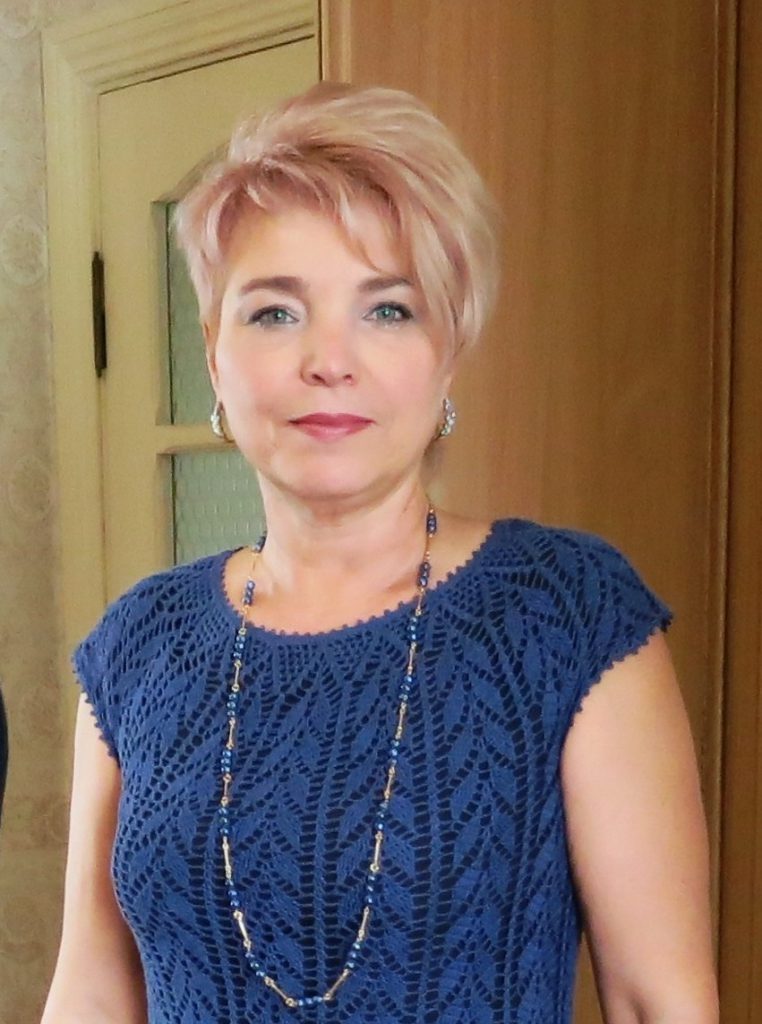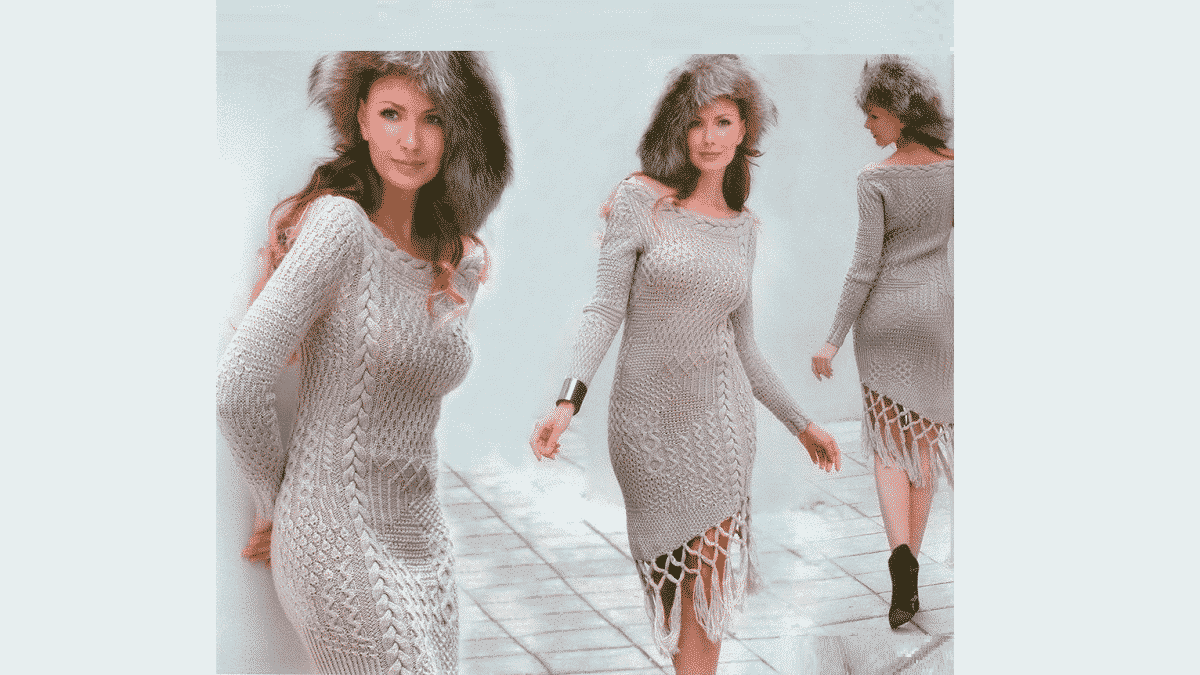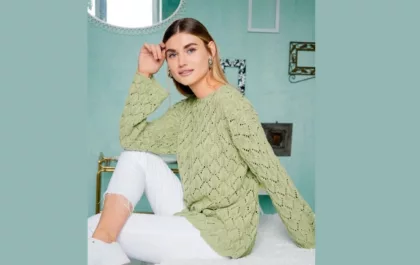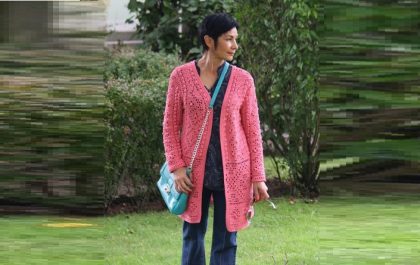
Patchwork style dress with an original composition of 21 patterns. To complete this model you need to have knitting skills.
Size 44
You will need 800g. wool 200m/100g.
Hook No. 4
To complete this pattern, you must have knitting skills. Its knitting is complicated by the fact that there is no specific knitting system. The patterns are arranged chaotically, transitions from one pattern to another occur at different angles. The description graphically depicts or describes the patterns used by the author. But you can also use several patterns you have chosen, which are not very difficult to execute and the repeat of which will not exceed 14-16 loops.
Naturally, the patterns have different densities, so individual fragments will look pulled together or folded. Don't let this bother you. You need to knit with a high degree of fit. This dress can be called a “second skin”. When the fabric fits tightly, all the “irregularities” of the patterns are smoothed out. To make knitting easier, make a life-size pattern and outline it in accordance with Fig. 18 or at your discretion, number each element according to the number of the pattern that you will use.
Distribute the patterns so that on the line of the hips and chest there are looser patterns that do not tighten the fabric. And on the waist line, place patterns that are denser, tightening the fabric. It is necessary to arrange the patterns so that when sewing the side seam they coincide. To determine the knitting density, knit several samples measuring at least 20x20 cm using different patterns. Using the middle part of the sample, make an approximate calculation of the knitting density. Make calculations for knitting fabric according to your measurements. The author's knitting density is 23 loops per 10 cm.
Knit the back and front with one piece. Start knitting from the corner side of ABCG. Cast on 54 loops (AB). In each subsequent row, make two increases as follows: at the beginning of the row after the edge and at the end of the row before the edge, we make yarn overs. Knit the already thrown loops in accordance with the pattern. On each side of the bevels, add 79 loops (VG). Knit the corner part with bevels using pattern No. 6. The bevel angle will be 30 degrees.
Switch to knitting in different patterns, according to your pattern. For convenience, use markers. It is necessary to take into account when knitting a new pattern over the previous one that when introducing one loop into a new pattern, the angle of transition from knitting to knitting will be 45 degrees, and when using two loops - 30 degrees. Place the braid (pattern No. 12) from the beginning of knitting in this way: knit 14 loops with pattern No. 17, 2 IP, 12 LP braids, 2 IP, continue the row with the selected patterns. At a height of 74 cm from the beginning of knitting, close the armholes. In every second row, cast off 4,2,1,1,1 loops respectively (9 loops in total).
In Fig. 18 armholes are located on the sides of the knitting and in the center of the fabric. Now we separately knit the top of the back and front. For the back, knit 17 cm of fabric from the beginning of the armhole and bind off the loops. Before knitting with neckline. At a height of 11cm from the armhole, cast off the middle 32 loops, then in every second row of the left half, cast off 6 6,6,6,4 loops. Knit the right side in a mirror manner. The neckline is decorated with a braid. For it, cast on 17 loops: 3 LP (garter stitch), 12 LP - braid, 1 IP and 1 connecting stitch.
For the sleeve, cast on 44 loops, knit 40 cm, increasing 11 times by 1 loop at the beginning and end of the row. Knit the head of the sleeve, closing the loops on both sides in every second row in the following sequence: 3, 3, 14 times 1 loop. Sew the side seam of the dress fabric, sew in the sleeves. Decorate the bottom of the dress with fringe.
Pattern 1. The number of loops is a multiple of two.
1p:. all loops are knit;
2p.: 2 LPs together;
3rd row: from each loop, knit 2 loops: LP and IP;
4 rubles: all individual entrepreneurs;
5p.: repeat from the 1st row.
Pattern 8.
1p.: *3 LP together as follows: LP, yarn over, LP; 3 LP*;
2p.: all individual entrepreneurs;
3p.: *3 LP, 3 LP together as follows: LP, yarn over, LP*;
4 rubles: all individual entrepreneurs;
5p.: repeat from the 1st row.
Pattern 14. The number of loops is a multiple of 6 plus two edge loops.
1st round: *4 LP, 2IP;
2 rub. and all even: how the loops lie;
3rd row: remove two loops on an additional knitting needle and leave on the wrong side of the work, 2 LP, knit 2 LP from an additional knitting needle, 2 IP*;
5p.: 2 IP, *2 PP, remove 2 LP on an additional knitting needle and leave on the wrong side of the work, 2 LP, 2 LP from an additional knitting needle*, 4 LP;
7p.: *2 IP, remove two loops on an additional knitting needle and leave on the front side of the work, 2 LP, 2 LP from an additional knitting needle*;
9p.: 4 LP, * remove two loops on an additional knitting needle and leave on the front side of the work. 2 IP, 2 LP from an additional needle, 2LP*, 2 IP;
11r.: repeat from the 3rd row.
Pattern 16.
1st round: *2 LP, 2 IP*;
2p.: according to the drawing;
3p.: *1 IP, 1 LP, yarn over, 1 LP*;
4 rubles: *1 LP, 3 IP;
5p.: *1 I P, drop the first LP onto the next two, knit 2 LP*;
Row 6: repeat from the 1st row.




Related posts
About the Author

Welcome !
My name is Lilia. The main hobby of my life is knitting. I started with knitting needles and switched to a knitting machine. In 1988 I got acquainted with crochet - Romanian lace. About 10 years ago I became interested in Irish lace and Shetland knitting. And now I’m trying fillet crochet. On this site I want to share with you my 45 years of experience in various knitting techniques.
Latest publications
Светло-зеленый ажурный пуловер
Нежно-зеленый пуловер с расклешенными рукавами связан из хлопка с шелком ажурным узором .
Pink crochet cardigan
A cardigan knitted with yarn in a pleasant shade of pink fits perfectly into both a summer ensemble and autumn denim.
Openwork summer coat
Топ «Retinal»
Blog Subscription
Be the first to receive new items!



